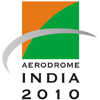By Volker Eck, PhD, senior director science and technology, PDA
The Parenteral Drug Association (PDA) held the PARENTERALS 2010 conference in Berlin on 26-28 October 2010 with delegates from 20 countries representing over 95 companies and nine regulatory bodies.
Highlights of the event were:
Tor Graberg from the MPA of Sweden and current PIC/S chair was elaborating on globalisation and harmonisation needs and projects. His message to the participants was that most probably, the EU GMP Guide will be split into three parts and the annexes. Part III will contain miscellaneous general guidances, like quality system or risk assessment and risk management aspects. Tor Graberg emphasised the role and impact of the PIC/S scheme, and its objectives “to lead the international development, implementation and maintenance of harmonised GMP standards and quality systems of inspectorates in the field of medicinal products”.
The interest in joining this organisation is increasing and there are seven agencies under assessment, including the US FDA. The latter just recently was invited to participate from 1 January 2011 onwards.
Ingo Presser from Boehringer Ingelheim discussed defect reduction issues. For example, although 11% of defective components were sorted out, defects still caused 20% of all deviations in manufacturing. To reduce this, a 100% inspection at the supplier was introduced. The visual inspection reduced the rejection rate to less than 8%, but introducing an automated camera system pushed it down to less than 0.3%. Similarly for glass components, the introduction of first visual and then automated inspection reduced the rejection rate to a fourth for particles glassed in, by more than a factor of eight for cracks and 20-fold for chips found.
Roland Guinet from the French Agency for Security of Health Products (AFSSAPS) discussed the integrity of bagged components ready to use and ready to fill, respectively, in an aseptic sterile process. He argued that there was a need to verify integrity of the bags. The dispute was that, as the components are delivered bagged in several protective layers and as there are several decontamination steps during the passage into an aseptic processing area, a risk assessment study could show if there was a not acceptable risk remaining.
Roland Guinet discussed the requirements of Annex 1 on failed media fill exercises. In his opinion, any positive unit found should trigger an investigation. If there was a root cause identified, this would justify to only repeat this particular media fill run after implementing corrective actions. If there was no root cause, a revalidation should take place as there are very likely several corrective actions taken to mitigate identified potential causes. He also emphasised the need to have a successful growth promotion test for the media to justify the media fill results obtained thereafter.
Frederik Studstrup from NovoNordisk discussed opportunities to reduce energy consumption. He emphasised that NovoNordisk realised over 400 projects in existing production facilities to reduce the CO2 emission by 28,000 tons or 80 million kWh. More than half of them had a return of investment by energy cost savings of less than 12 months and that came mainly from projects involving cooling and ventilation systems. Simple adjustments could gain reductions by 47% and more in heating, cooling and dehumidifying costs. Water savings realised led to a 20% saving in water consumption.
Bruno Vallayer from Bertin Technologies introduced a new air monitoring system that is based on a cyclone technique. The volume sampled can reach 3m³ in 10 min, the sample can be split and an aliquot submitted to rapid microbiological analysis. The efficiency for recovering microbiological contaminants ranges from 78% biological efficiency for S epidermidis to 85% for E coli.
Daniel Mueller from the Regierungspraesidium Tuebingen, Germany, elaborated on the impact of Annex 1 to the EU GMP Guide and gave some interpretation. He addressed the closing / capping issue where two possibilities are given: capping as an aseptic process or as a clean process. From his personal experience there is a 40/60 divide between aseptic and clean processes employed. Another aspect he was focusing on was the practice of using ready-to-fill or ready-to-use components. He stressed that these comprise manufacturing operations like sterilisation of components and hence are subject to GMP oversight. It is expected that the marketing authorisation holder is aware of deviations and other changes at the component manufacturer’s side, has regularly performed audits and has evaluated the validation procedures and practices as well as the execution.
The response from the audience was such that the organisers have decided to hold the next conference in two years’ time.

